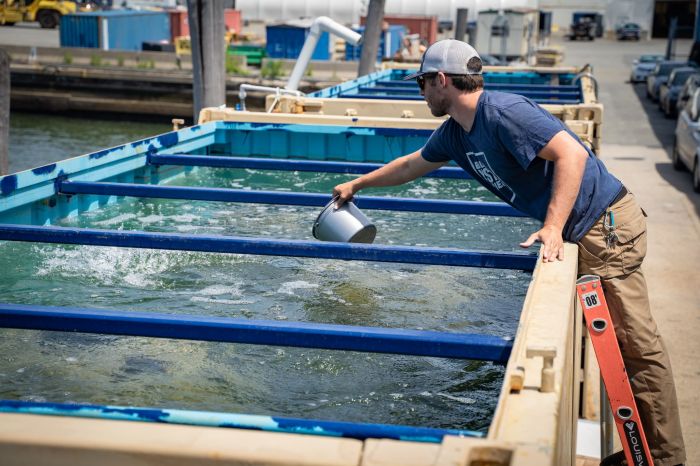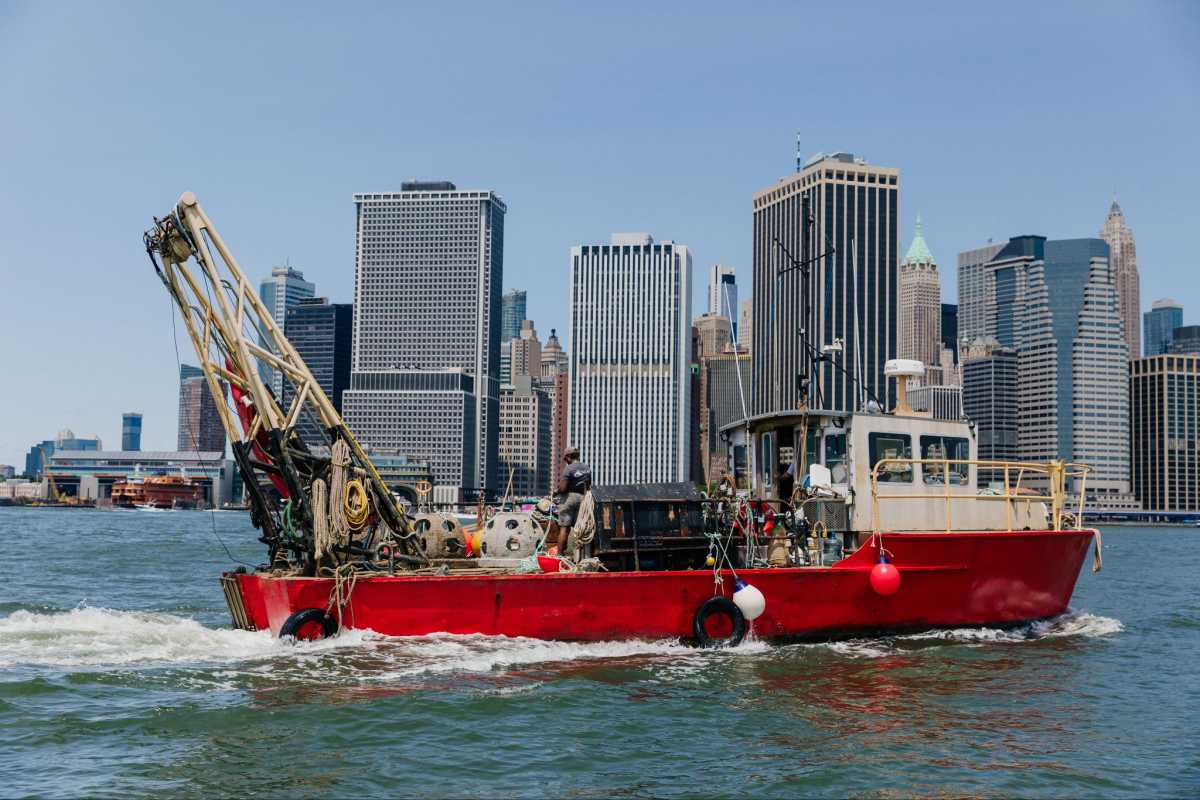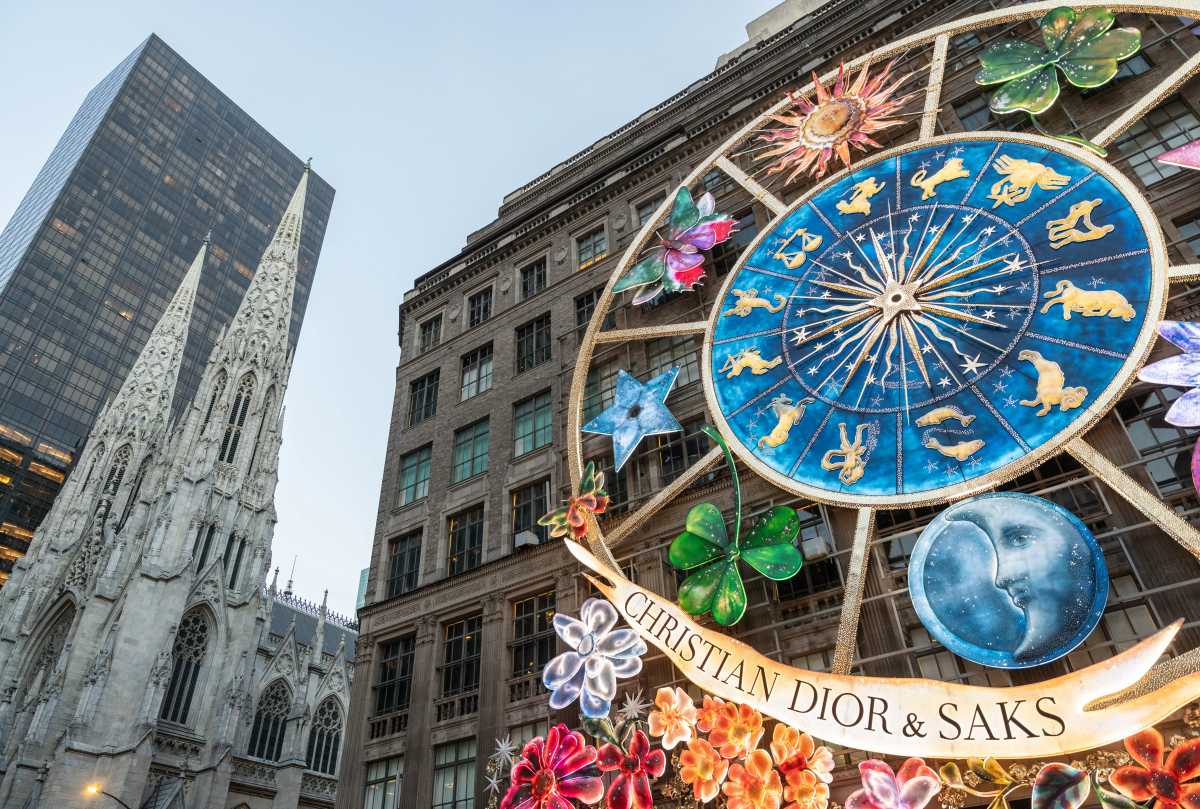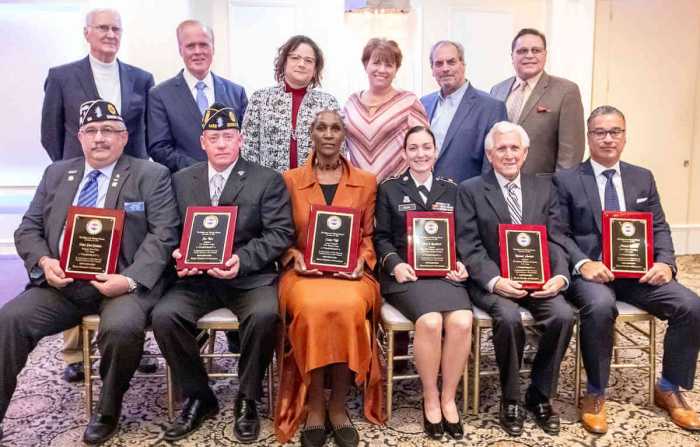Pet owners love watching their dogs, cats and bunnies on webcams at home, but now scientists are doing the same to monitor oysters, a move that will ultimately help improve aquatic habitats in NYC.
The Billion Oyster Program (BOP), a local conservation group restoring oyster reefs in New York Harbor, started a pilot program this summer using new smart technology to monitor 30 million of these bivalve mollusks in special tanks before they move into the wild.
The goal? To get these home-grown saltwater creatures into enough tip-top (or tip-shell) shape to filter toxins out of waterways once they return home to the harbor, thus supporting a healthy ecosystem for their water-faring, sea creature friends.
How does the technology work?
In their Governors Island laboratories, BOP scientists installed sensors made by Viam, a smart-machine software company, into four tanks where oysters are maturing. The installation includes a smart camera that streams a live video of the larval (or young) oysters in tanks that can transfer important real-time data to scientists’ phones, tablets and computers almost anytime, anywhere.
The technology allows scientists to make tank adjustments remotely, freeing up their time to focus on growing and installing more oysters into their natural habitat.
“Our partnership with Viam allows us to use technology in innovative ways to support oyster production on Governors Island” Pete Malinowski, executive director of BOP, said. “The new system saves our team time and allows for remote monitoring of our aquaculture systems, allowing us to produce more oysters to restore reefs in New York Harbor.”
Malinowski added that the technology is not only great for oysters, but supports the environment as a whole.
“This is a powerful example of how technology can help us address not only the complexities of urban harbor restoration but also the broader climate challenges facing New York City,” he said.
Oysters are not only known for their whacky-looking shells and pearly insides. As filter feeders that gobble up pollutants, they play a key role in maintaining clean waters and healthy ecosystems.

The technology is helping BOP scientists monitor millions of larval oysters. Throughout July and August, the surviving spat — a term used to describe oysters when they attach to a surface, such as other oyster shells — were dropped into waters near Brooklyn Bridge Park, where the hope is they will continue to grow and form oyster reefs that will support a healthy aquatic environment.
“Our technology can play a major role in making our cities, waterways and ecosystems healthier and more resilient to the impacts of climate change,” Eliot Horowitz, founder and CEO of Viam, said. “The Billion Oyster Project’s work to restore oyster populations in New York Harbor has an impact on all New Yorkers, and we’re excited to help them optimize oyster growth and ensure thriving ecosystems that can also help protect our city.”
The technology is not just a one-shot deal to catch real-time data. It also allows scientists to evaluate conditions and compare tanks historically, offering valuable insights for future oyster growing seasons.
To date, the BOP, which recently celebrated its 10th anniversary, introduced 140 million oysters across nearly 19 acres of New York Harbor.
Read More: https://www.amny.com/news/






































